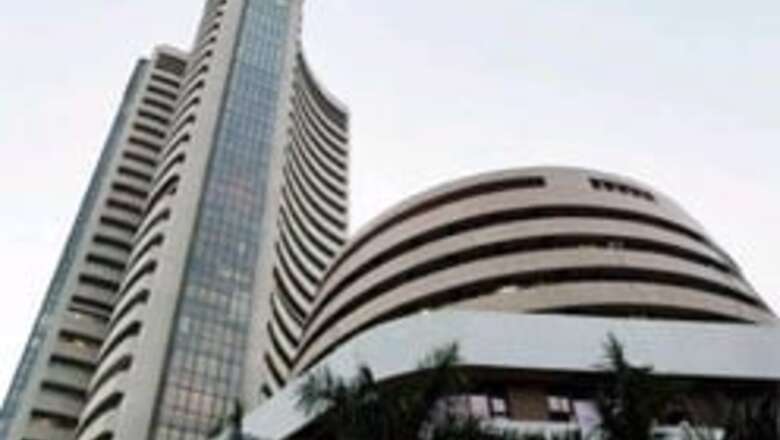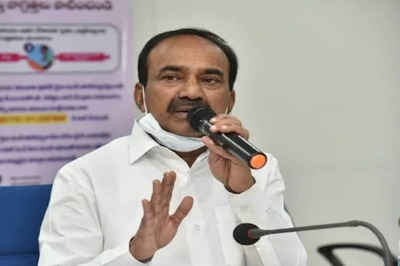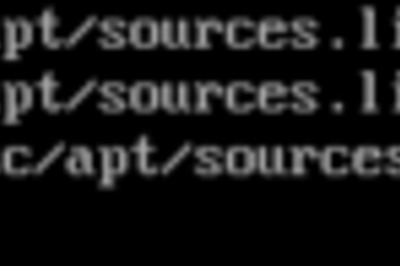
views
New Delhi: The shocking revelation by National Security Adviser M K Narayanan that terrorist groups are manipulation the markets as their new modus operandi to raise funds for their operations has sent shockwaves through the entire economic setup.
Narayanan specifically mentioned that several fictitious companies have operated in Mumbai and Chennai stock exchanges and their roots have been traced to terror outfits.
Narayanan dropped this bombshell at the 43rd Conference on Security Policy in Munich last week. So what exactly did Narayanan say and in what context?
Here we reproduce that part of the speech where the National Security Adviser listed the "more common methods employed by terrorist outfits to generate funds, as experienced in the context of South Asia."
Voluntary contributions: From individuals, members of expatriate communities and organisations that sympathise with the broad objectives of the terrorist organisation. The LTTE in Sri Lanka and the al-Qaeda regularly receive sizable contributions through such means.
Forced/Compulsory donations: Ethnic, ideological and religious terrorists are known to use the technique of forced or compulsory donations. On special occasions such as religious festivals, sending round of ‘collection boxes’ is fairly common, and provides anonymity as well. Compulsory subscriptions to pro-terrorist publications have laterally become an important avenue for generation of funds. The Pakistan-based Lashkar-e-Toiba’s monthly, Majalah-al-Dawana, and its weekly magazine, Al Ghazwa, are two prime examples.
State support/sponsorship: The Lashkar-e-Toiba, the Hizbul Mujahideen and Al Badr (which operate in India) are well patronised, including through provision of funds, by certain official agencies across the border. Shared objectives such as involvement in ‘Low-Intensity Conflict’ provide the excuse for such official support. A tentative estimate of funds made available to such terrorist outfits annually is in the region of a few million dollars.
Extortion and use of coercive methods: Many terrorist outfits today imitate criminal enterprises. Intimidation of small businesses, individuals and even some state enterprises to extort funds has become common.
Association with Criminal Syndicates: Jehadi and non-jehadi terrorist outfits seek and enter into partnerships with Organised Criminal Syndicates and outsource fund-raising to the latter. This is largely true of metropolitan cities. It takes many forms, but mainly bank robberies and kidnapping for ransom.
Utilisation of legitimate business enterprises: Terrorist outfits set up legitimate business enterprises viz. restaurants, real estate, shipping, etc. and utilise part of the proceeds to siphon off funds for terrorist activities. Among terrorist outfits, the LTTE has a very well-established network of legitimate businesses, which provide both funds as well as logistics for their activities. Jehadi terrorist organizations have begun to follow suit.
Stock market operations: Isolated instances of terrorist outfits manipulating the stock markets to raise funds for their operations have been reported. Stock Exchanges in Mumbai and Chennai (India) have, on occasions, reported that fictitious or notional companies were engaging in stock-market operations. Some of these companies were later traced to terrorist outfits.
Misuse of banking channels: Legitimate banking channels are regularly being used to fund terrorist operations. Many instances of funds received via banking channels from so-called safe locations such as Dubai and UAE intended for terrorist organisations have been detected by Indian counter-terrorist agencies. Each individual transaction tends to be small so as not to attract attention and to avoid detection. Use of both real, and fraudulent, ATM cards has also been resorted to at times.
PAGE_BREAK
Narcotics: Funds from drug cultivation and trafficking in narcotics are extensively used to fund terrorist outfits. Both jehadi outfits and the LTTE rely heavily on such funds for their activities. The sharp rise in opium cultivation in Afghanistan, which has more than doubled during the past few years, raises concerns of more funds becoming available to terrorists. According to Indian agencies, at least one-eighth of their major interdictions reveal a drugs- terrorist nexus.
Counterfeit currency: Counterfeiting of currency is currently a favourite method being adopted (by agencies across the border) to fund terrorist activities directed at India. Large amounts of high-quality counterfeit Indian currency are detected each year, the normal route being via Nepal and Bangladesh.
Charities: An important source of funds to jehadi terrorist outfits are religious charities. Sincere believers contributing to charities are perhaps unaware that a sizable portion of the funds goes to fund terrorist activities and terrorist outfits. Many of the charities are already designated as ‘Terrorist Front Organisations’; yet most continue to operate under new labels. The Al Rashid Trust went through several changes in nomenclature, while the banned International Islamic Relief morphed into the Sanabil Al Khir Foundation. Conduits through which such funds find their way to terrorist organisations include established banking channels such as the Habib Bank in Pakistan.
Apart from these means, Narayanan also mentioned various money-laundering techniques.
Moving funds for terrorist purposes to the actual locale where a terrorist act is perpetrated is a carefully executed exercise. Terrorist outfits, as a rule, employ money laundering techniques so as to evade detection by enforcement agencies. The most popular means employed in South Asia for laundering funds, is the ‘underground and parallel banking system’ which ensures placing of funds without actual or visible movement of money.
A combination of conventional money-laundering techniques, with placement of funds utilising the ‘underground and parallel banking system’ has made it extremely difficult to track funds utilised for terrorist purposes, since no audit or paper trail is available. The globalisation of terror, and the ability of terrorists to exploit state-of-the-art technology, thus further enhances their capability to move ‘hot money’ across international borders.


















Comments
0 comment